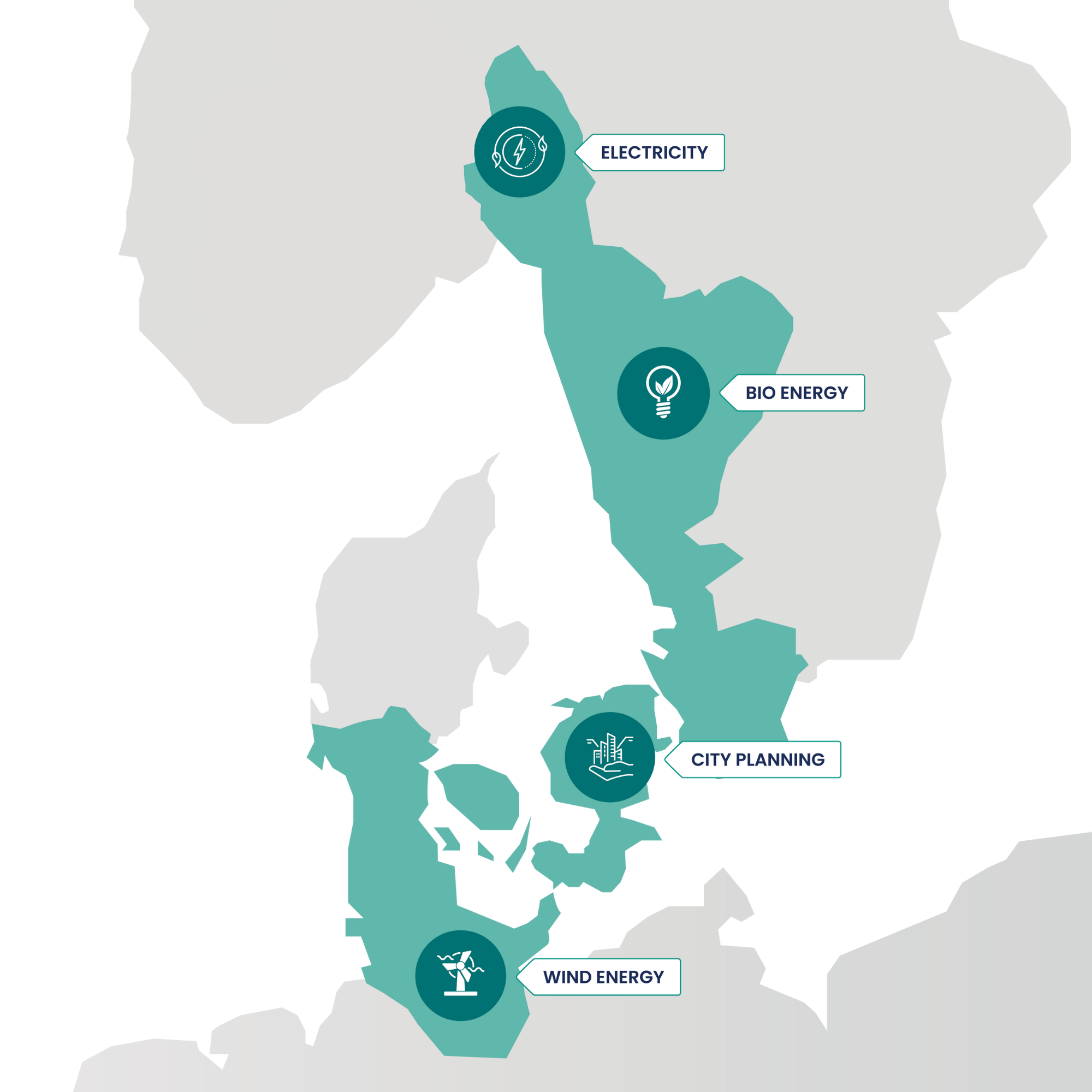5 facts about the green hub
1) In the STRING region there are more than 4000 green tech companies and 50 new ones are established every year.
2) 8 times more green tech publications are published in the STRING region than the global average with 911.4 publications per 100.000 inhabitants.
3) The number of patented green tech inventions have tripled over the past 20 years but to maintain and strengthen our position we should increase the conversion of research to innovation in companies.
4) The Fehmarn Belt Fixed Link provides a window of opportunity to break down silo thinking across borders in the public and private sector to increase competitiveness. This will further advance the STRING region’s position as a green hub.
5) The STRING region is an attractive place to invest with 84% of the investments in green companies coming from outside the region with Central Europe, The San Francisco Bay Area and BosWash being the biggest investors. The high amount of investments coming from some of the leading tech regions in the world is a clear sign that STRING already is a green hub.
Unlocking the merits of scale
The STRING megaregion is part of the global top 20 hotspots of developing, producing and patenting green technologies. The strong political dedication to the green transition and a rapidly growing internal market, further strengthens Northern Europes position as an attractive placement for green investments.
A comprehensive mapping of the Green Tech Sector in STRING shows an abundance of private and public institutions working on green solutions that complement each other throughout the region. Each of the four countries covered by STRING exhibits a specific expertise in green technology, including wind energy in Northern Germany, bioenergy in Sweden, city planning in Denmark and electricity in Norway.
But there is one big challenge; the innovative green growth centres in Northern Europe are not connected to the extend that provides the merits of scale, which is key to reach our potential as a globally acknowledged green hub. The individual growth centers remain too small to act independently on the global scene and we are competing against one another, instead of working together.
To obtain the merits of scale and establish critical mass STRING members work to increase connectivity across borders, scale up green businesses and brand the STRING megaregion internationally as what we really are: A green hub. This way we create a gateway to global markets and investments, accelerate the green transition and create a clean green economy for the future.
Fostering the green hub
1. Strengthening cluster cooperation
In addition to strengthening the physical connection between STRING members (see infrastructure section) we also work to strengthen networks in the megaregion to increase the green growth potential of the individual countries, regions and cities in STRING.
The existing technology base in STRING provides a strong platform, and a potential for further growth. Especially if STRING is successful in creating and strengthening the existing innovative cross-border networks that can draw on knowledge throughout STRING and exploit the innovation infrastructure, knowledge, and investor interest that already exists.
Policies and strategies are often driven by national, regional or local individual priorities, which can lead to missed opportunities of yielding broader benefits through cross-border collaboration. While individual territories may face increasing pressure to remain visible and competitive, they can become globally more visible and successful through cooperation and pooling of resources.
Cross-border green clusters
The countries of Northern Europe are defined by a large number of small and medium sized companies with various specific expertise. But their growth potential is limited by the lack of business synergies caused by the localisation in the relatively small individual regions and cities of STRING. Increased connectivity in the megaregion provides access to a broader range of complementary knowledge and expertise, which allows for companies to create strategic partnerships across borders and bid on large scale international projects.
Besides increasing connectivity in the megaregion, STRING is actively developing green clusters through public/private flagship projects.
Cross-border investment agency collaboration
STRING works to increase cooperation between investment agencies, to stop internal competition in STRING by creating a common platform for green investor-business relations.
2. Green public procurement
The public sector (procurements) is an important component in the green transition and a major driving force for innovation and development of green technologies. Therefore STRING works to develop our internal market for green industrial technologies through green public procurement to accelerate the green transition and exhibit our strengths to the world. Growth of the green sector and increased labour mobility with faster and cheaper transport will help accelerate the creation of green jobs, and strengthen STRINGs position as a globally acknowledged green hub.
Cities and regions across STRING contribute to the green hub agenda by continuing to implement sustainable urban and regional planning. Such initiatives help create a tangible connection to STRING for residents and contribute to the megaregion’s green brand building.
3. Positioning the STRING megaregion
With a shared history, geographic proximity and culture, STRING has the potential to shape a common identity to increase both internal co-operation between members and international visibility.
In previous analysis, the OECD underlined the potential to valorise and mobilise common ground, work jointly to develop a joint branding of the megaregion as the global growth centre of the green transition, to boost international attractiveness.
STRING undertakes several initiatives to create a strong branding around the megaregion. To build the STRING brand in a global context, the secretariat attends international investment promotion events and tells the story of Northern Europe’s green hub. In addition, a portable exhibition displaying characteristics that shape the STRING megaregion as a green hub will be travelling the political festivals held in member regions. Finally, The Green Industrial Revolution Radio, an international radio program, connects the brightest minds with the most important stakeholders and politicians involved in the global green transition.

